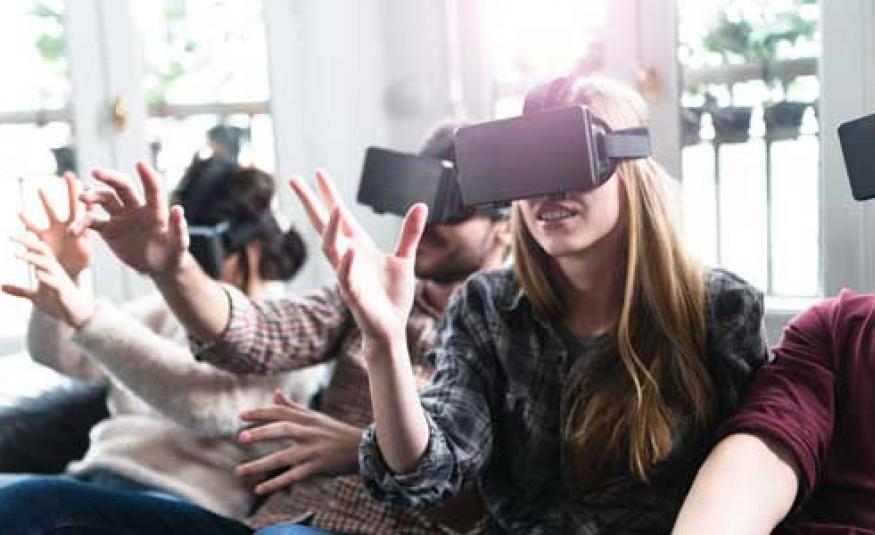It’s not the taking part, but the experience that counts, according to new findings from brand experience company Freeman, writes Antony Reeve-Crook
Chief marketing officers, brand managers, and event planners alike are putting more emphasis than ever on in-person brand experiences, according to a new survey conducted by Freeman, the global brand experience agency.
The specialists in immersive experiences for their clients’ audiences teamed up with SSI, a provider of data solutions and technology for consumer and B-to-B survey research, on a study into trends associated with sensory brand experience.
Over 950 marketing professionals across North America, Asia and Western Europe responded to the survey and it appears both B-to-B and consumer audiences seek increasingly personalised interactions with brands, and 9/10 of them agree that brand experiences deliver stronger face-to-face interactions and more compelling brand engagements.
The list of events at which sensory brand experiences can make an impact is an increasingly long one. Trade shows, conferences, virtual and hybrid events, permanent installations, virtual and augmented reality experiences, and cutting-edge pop-ups all provide more value for attendees if greater attention is paid to the user experience.
“The role of brand experience continues to increase in scope and importance, as audience expectations evolve,” says Chris Cavanaugh, executive vice-president and chief marketing officer at Freeman.
“Steep competition, changing demographics and more sophisticated audiences mean marketers need new approaches. The right brand experiences have the power to evolve brands, build relationships and inspire action. Our new research helps us understand brand experience as a medium of the future.”
As might be expected, marketing executives feel most strongly that brand experience is great for building loyalty, with 59% of chief marketing officers (CMOs) recognising the role brand experience plays in creating lasting relationships with audiences.
When it comes to communicating this message, the role of the person we approach is key to the likelihood they’ll listen. Survey results show more than 58% of CMOs feel brand experience delivers a strong impact in connecting audiences to their brands and increasing advocacy, while just 13% of brand managers and 18% of event planners feel the same way.
As marketers see the positive results from immersive, sensory brand experiences, they are increasing their spend in this area to get closer to customers, build loyalty, and remain top of mind in when it comes to buyers making a choice.
As marketers realise the value of brand experiences, they are shifting spend, with more than one in three CMOs expecting to allocate 21-50% of their budget to brand experience marketing over the next 3-5 years.
So where are they spending the money? Well, not where they should be, according to Freeman’s survey. PCOs and event organisers need to be more inventive when customising the visitor experience. Currently, these groups aim to create stronger connections through now timeworn, conventional tactics. According to the survey they are driving brand experience through the standard tools of:
• Website (58%)
• Social media (57%)
• Email marketing (51%).
A spokesman for Freeman says they may not be moving fast enough. “When it comes to immersing an audience into a brand, there’s an entire toolbox of game-changing technology out there. Companies involved in more than 20 events per year are taking greater advantage of these tools, which include interactive touch screens, location mapping, virtual reality, and gamification.”
Marketers in Asia [see box] appear to be early adopters of more interactive technologies – 42% are tapping into sensory interaction to personalise brand experience, compared to 28% in North America and 13% in Western Europe.
In terms of virtual reality, a third of Asian organisers and their clients use the technology, compared to a maximum of 9% elsewhere.
Gamification is another growing digital integration, again leading the way in Asia, with 22% of companies there, versus only 9% and 13% for their respective counterparts on Europe and North America.
But wherever your company is based, Freeman’s survey demonstrates beyond all else:that marketers trust well-designed sensory experiences to build relationships, drive sales and appeal to new audiences.
The sooner we become more progressive in this area, the greater the competitor advantage we can deliver.
Which regions are most dedicated to delivering on brand experience?
More than a third of chief marketing officers (CMOs) dedicate 21% of their budgets for the brand experience.
Despite containing a greater percentage of emerging business event markets, Asia expects to lead the way with 32% of Asian marketers anticipating a spends of more than a fifth of their budget to brand experience. This is more than double their current spend.
This places Asia’s forecast significantly ahead of that of Europe’s marketers on 23%, and a little ahead of North American forecasts of 27%.
In the next five years, CMOs expect to dedicate 28% of their budget to brand experience for B2B events, while 18% will do so for B2C events, indicating the experience’s important to generating business leads and sales.






